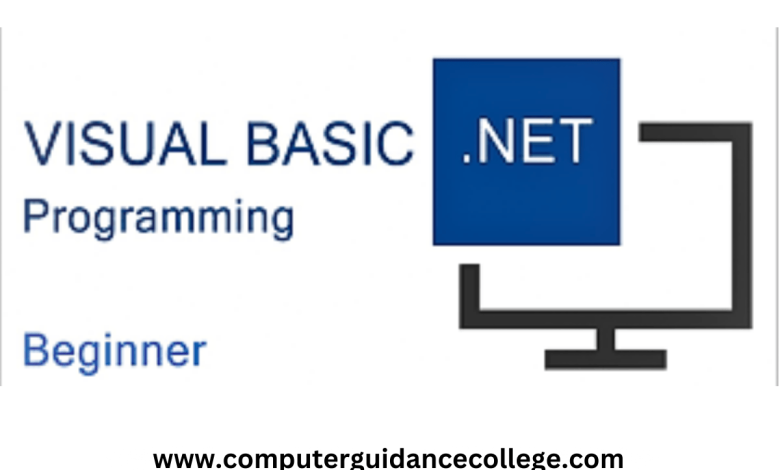Visual Basic / VB.Net

Introduction to Visual Basic & VB.Net Programming
Course Description:
This course introduces students to the fundamentals of Visual Basic (VB) and VB.Net programming. It covers the core concepts of object-oriented programming (OOP), graphical user interface (GUI) development, and database connectivity. Students will build their skills through hands-on projects, working with Visual Basic’s integrated development environment (IDE), and learn how to create practical applications for desktop, web, and mobile platforms.
Course Objectives:
By the end of this course, students will be able to:
- Understand the history and evolution of Visual Basic and VB.Net.
- Write basic and advanced programs using VB and VB.Net.
- Develop GUI applications with form controls, event handling, and data binding.
- Implement object-oriented programming principles such as inheritance, polymorphism, and encapsulation.
- Interface with databases using ADO.Net for data retrieval, updates, and management.
- Debug, test, and troubleshoot VB.Net applications.
Course Modules:
Module 1: Introduction to Visual Basic & VB.Net
- Overview of Visual Basic and VB.Net
- Installing and setting up the Visual Studio IDE
- Writing your first VB.Net program
- Syntax, variables, and data types in VB.Net
Module 2: Control Structures & Functions
- Conditional statements: If, Else, Select Case
- Looping structures: For, While, Do While
- Functions, Subroutines, and Procedures
- Error handling with Try…Catch
Module 3: Object-Oriented Programming (OOP) with VB.Net
- Classes and Objects
- Constructors, Properties, and Methods
- Inheritance and Polymorphism
- Encapsulation and Access Modifiers
Module 4: Graphical User Interface (GUI) Development
- Creating Windows Forms Applications
- Using controls: Buttons, Labels, Textboxes, etc.
- Event-driven programming (Handling Button Clicks, Form Loads, etc.)
- Using menus, toolbars, and dialog boxes
Module 5: Database Connectivity with ADO.Net
- Understanding the ADO.Net architecture
- Connecting to databases (SQL Server, Access, etc.)
- Retrieving and displaying data using DataAdapters
- CRUD Operations (Create, Read, Update, Delete)
- Binding data to UI controls
Module 6: Advanced VB.Net Features
- Working with Collections and Arrays
- LINQ queries in VB.Net
- Exception handling and debugging
- Multithreading in VB.Net
- Introduction to web development with VB.Net (ASP.Net basics)
Module 7: Final Project & Application Development
- Planning and designing a VB.Net application
- Implementing features learned throughout the course
- Debugging and testing your application
- Presenting the project and preparing for deployment
Assessment & Evaluation:
- Assignments: Practical exercises and coding assignments (30%)
- Midterm Exam: Theoretical assessment and programming tasks (20%)
- Final Project: Complete application using VB.Net with GUI and database integration (40%)
- Participation: Engagement in class discussions, code reviews, and team projects (10%)